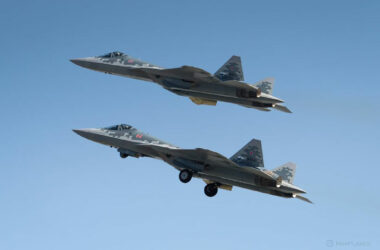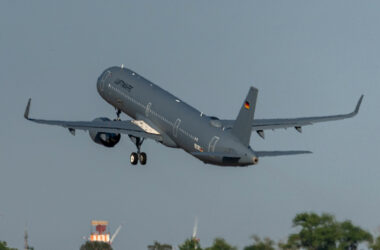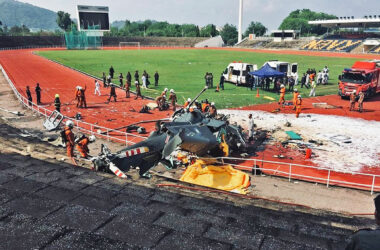The U.S. Air Force’s (USAF) shift in direction with its tanker fleet has given rise to several stealth aircraft concepts to replace current passenger jet-derived aircraft.
Rather than pursuing a new conventional tanker, the USAF is accelerating the Next-Generation Aerial-refueling System (NGAS) program, aware of future challenges in contested environments.
Lockheed Martin’s Skunk Works division, for example, unveiled a new proposal for a massive unmanned aircraft with low-observable characteristics at the Airlift/Tanker Association meeting.
Follow Air Data News: WhatsApp | Google News | Instagram | LinkedIn | Twitter | Facebook

The design differs from most concepts presented, with a flattened fuselage, swept wings, and a tail with canted vertical stabilizers.
The two pods near the wingtips, from which rigid booms for in-flight refueling emerge, are striking.
The engine exhaust is located in the tail, between the stabilizers, but the air intakes cannot be identified. The most likely location is in the nose or in the lower part of the fuselage, however.
Many programs, little money
The unmanned aircraft is much smaller than a KC-46, which would meet some USAF prerequisites to have a radar signature similar to that of stealth fighters, in addition to being able to operate on smaller runways.
There are doubts as to whether the concept will also be able to refuel US Navy aircraft and also helicopters and tilt-rotors such as the V-22, which use the hose and funnel technique. Equipment of this type could be installed in the rear part of the fuselage, for example.

Despite the plausible proposal, a Lockheed Martin spokesperson told Air Force & Space that none of the concept art accurately represents what the company intends to offer the Air Force.
Amid budget constraints, the Air Force is looking to rethink its major advanced programs, including NGAD, which could lead to a sixth-generation fighter to replace the F-22 Raptor.
The Air Force currently has to deal with the new B-21 Raider bomber, the NGAD and NGAS projects, and the Collaborative Combat Aircraft (CCAs) programs, advanced drones that will be “loyal wingmen” to manned fighters.






